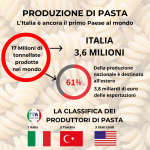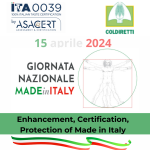“April is a promise that May is bound to keep”, an old adage says, and so the promises of reopenings made in the days following Easter (the second in Lockdown), seem likely to be kept from May onwards.
Meanwhile, in Italy, out of 334,417 businesses, 22,285 have been closed since the start of the pandemic, while 9,207 new ones have been registered, resulting in a negative balance of -13,070 businesses. In economic terms, there will be a strong impact on revenues, amounting to – 34.4 billion in 2020, and – 10 billion in the first quarter of 2021, with a sharp drop in the number of people employed in public establishments, especially in central Italy, equal to – 27.6%. 76.3% of businesses benefited from refreshments, while 23.7% did not (Fipe data).
So, while in many countries, the restaurant industry and its allied industries (let’s not forget!) have been benefiting from openings in terraces for months, in the luckiest cases, in Italy, we struggle with a plan that is perhaps beginning to take shape on the government’s decision-making tables, thanks also to the push of the regions. The guidelines of the draft prepared by the Conference of the Regions envisage new rules to allow commercial, entertainment and cultural activities to reopen as soon as possible, under safe conditions, regardless of the colour of the area.
According to Italians, the activities to be reopened with priority and continuity, immediately after school, are restaurants and bars. 89% of Italians are still worried about the Coronavirus pandemic and 40% of them say they are very worried. Yet, for almost one in two Italians there is no contradiction between this concern and the possibility of reopening restaurants. A sign that these are perceived as safe places (Ixè data).
The real news, however, is the premise of the new guidelines. Because it provides for the possibility of opening even in high-risk scenarios, i.e. the current red zone. This is how the plan is to proceed in Italy: encourage outdoor activities as much as possible, extending openings to dinner. Alternatively, depending on weather conditions, windows and doors must be kept open. The minimum distance between tables will be 1 metre, doubling to 2 metres in the event of high-risk epidemiological scenarios. The use of the mask will continue to be a constant, except when sitting at the table, as will all hygiene rules. The same approach for temperature measurement and online booking or, in any case, maintaining lists for screening in case of clusters. For consumption standing at the bar it must be ensured that the distance between customers is at least 2 metres. The measures, if respected, can allow both lunch and dinner service. Reservations are recommended. The guidelines, the draft states, apply to all types of food and beverage service businesses such as “restaurants, trattorias, pizzerias, self-service restaurants, bars, pubs, pastry shops, ice cream parlours, delicatessens”, even if they are located within the framework of accommodation activities, in bathing establishments and shopping centres, and for “catering activities”.
The recovery of activities will restart the supply chain connected to the restaurant industry, which in 2020 suffered a loss in turnover of over 9.6 billion euros in unsold food and wine. ITA0039 is always at the side of honest restaurateurs who are only asking to return to dispense taste, quality and wholesomeness of real Made in Italy products, in full compliance with safety regulations, in the interest of all.
ITA0039 gives value to the Made in Italy food chain. Download the App to discover which Italian restaurants are ITA0039 certified.







